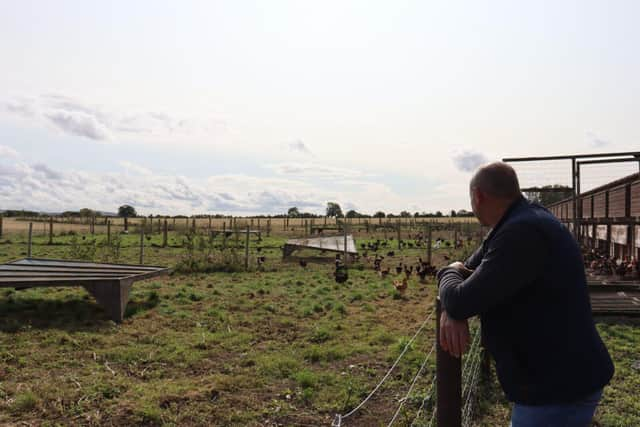Industry Bodies Worry About a Decline in Poultry and Pig Populations
and live on Freeview channel 276
The British Poultry Council (BPC), a representative of the poultry industry, has reported a significant decrease in the number of birds being reared for meat. They attribute the fall to a host of factors, including avian influenza and high production costs.
The decline is also playing in the duck and geese sectors. The National Farmers' Union (NFU), an industry body for farmers and growers across the UK, highlights the impact of avian influenza outbreaks on duck and geese flocks. They have also highlighted that the outbreaks have had a devastating effect on some farms, with the economic impact being significant, and making it difficult for some producers to recover.
Advertisement
Hide AdAdvertisement
Hide AdThe plight of native pig breeds is equally concerning. The Rare Breeds Survival Trust (RBST), a charity dedicated to the conservation of rare breeds of farm animals in the UK, warns that many native pig breeds are now classified as "priority", with the British Saddleback, Gloucestershire Old Spots, Oxford Sandy and Black Welsh classed as "at risk" on its watchlist.


The RBST Chief Executive, Christopher Price said: “We have moved all native poultry breeds to the Priority category as we continue providing urgent support for these irreplaceable breeds’ conservation. Seven of the UK’s 11 native pig breeds remain in the Priority category, with most of the rare pig breeds now showing a sustained downward trend in total sow numbers. The at risk Welsh pig for example has fallen from 457 sows in 2020, to 296 in 2023. We must reverse these worrying declines before it is too late.”
The reasons behind the decline in native pig numbers are complex, but the RBST points to the dominance of commercial breeds, ‘selected for higher reproduction rates and low fat carcasses as a key factor.’ . They also point out that this focus on efficiency comes at the cost of biodiversity and the preservation of our native breeds.
The decline of these flocks and pig breeds has potentially serious consequences. A lower level of domestic production increases reliance on imports, raising concerns about food security and traceability. The loss of genetic diversity also poses a threat, as native breeds often have unique characteristics that could be valuable in the future.
Advertisement
Hide AdAdvertisement
Hide AdThe UK’s Industry bodies are all calling for government support to reverse the decline. The BPC are urging for measures to help stabilise feed prices, while the NFU is calling for better compensation schemes for farmers affected by avian influenza outbreaks. Meanwhile the RBST is campaigning for increased funding for conservation programs and initiatives that promote the benefits of native breeds. Affiliated industry bodies, like Livetec Systems highlight that effective biosecurity is the best way to curb the spread of notifiable diseases, like avian influenza and African swine fever.